The Maloney Method
By Mary Pride
Printed in Practical Homeschooling #44, 2002.
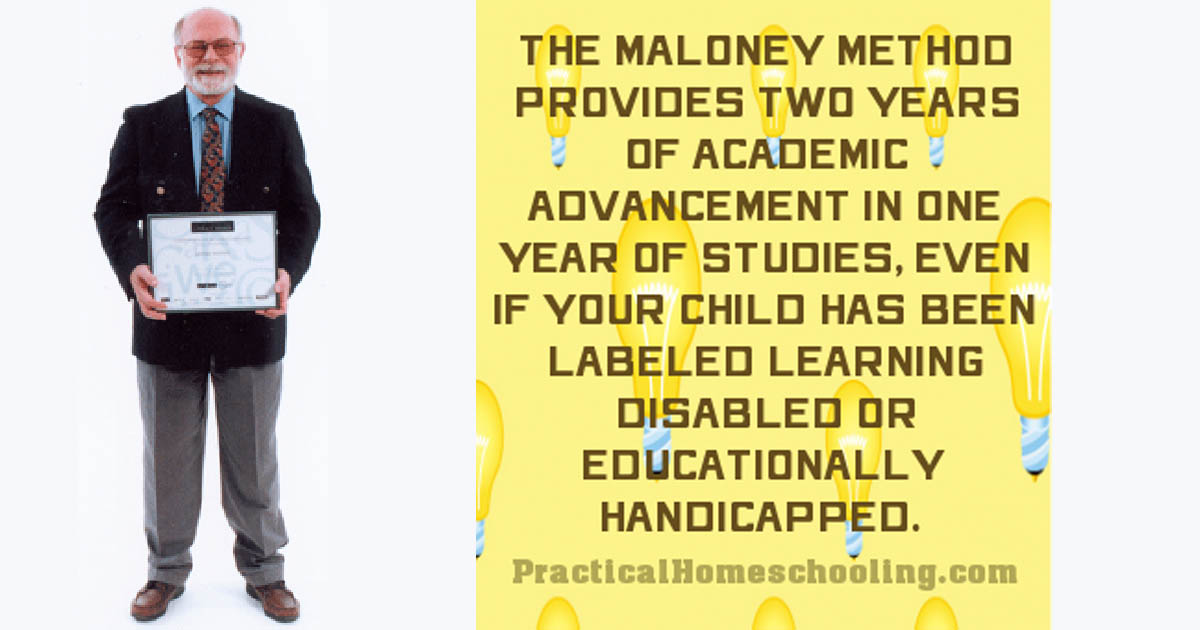 How did this feisty Canadian Literacy Educator of the Year come up with a five-point method that teaches basic skills to even the toughest students? And how does his method work?
How did this feisty Canadian Literacy Educator of the Year come up with a five-point method that teaches basic skills to even the toughest students? And how does his method work?

|
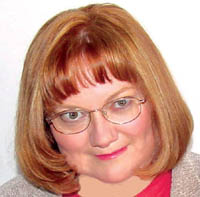
|
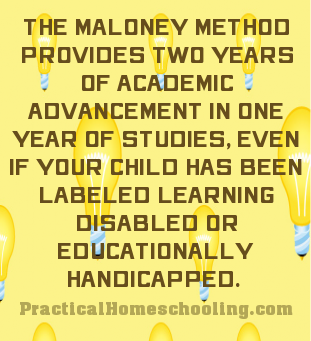 It is 1968, and the results of the first stage of Project Follow-Through have just been released. You say you have never heard of Project Follow-Through? Neither have most schoolteachers and administrators. This is odd, because Project Follow-Through eventually became the largest (250,000 children), most comprehensive (16 methods), longest-running (20+ years), most expensive, ($2.2 billion), comparative study of educational methods ever done in the Western world.
It is 1968, and the results of the first stage of Project Follow-Through have just been released. You say you have never heard of Project Follow-Through? Neither have most schoolteachers and administrators. This is odd, because Project Follow-Through eventually became the largest (250,000 children), most comprehensive (16 methods), longest-running (20+ years), most expensive, ($2.2 billion), comparative study of educational methods ever done in the Western world.
The Follow-Through study was an attempt to systematically determine what methods worked
. . . and what methods didn't . . . when teaching basic skills to "at risk" children considered likely to fail in school. It compared 16 different methods for teaching reading, spelling, language and arithmetic to more than a quarter million primary school children nationwide over more than a 20-year period. Only two of the 16 methods proved to have any effect: Direct Instruction and Behavior Analysis.
Based on this study, attempts were made in several places to implement these new teaching strategies. For a number of political reasons, in spite of their academic success all the public school programs based on Follow-Through research were eventually abandoned.
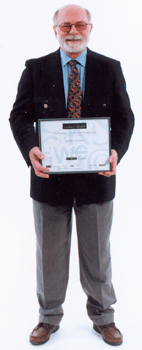
|
|
Michael Maloney holding the Canada Post 2001 National Literacy Award
|
Meet Michael Maloney
A feisty self-starter from Ontario, Canada, for more than a quarter of a century Michael Maloney has been a different kind of educator.
Like thousands of other beginning teachers, Maloney started his teacher career in 1964 in the usual way, teaching history and geography to high school students. He coached, helped with the school newspaper, and worked on school committees.
But Maloney's students were different. They were the hard cases, the repeaters, those with severe academic problems who had been side-streamed into non-academic courses.
One thing these children all had in common: an inability to read fluently.
Knowing little about teaching basic literacy, Maloney became so frustrated when the school principal failed seven of his hardest-working students that he quit public education.
After five years of graduate psychology studies, and a stint teaching community college, Maloney was eventually enticed back into public school classrooms, this time as a behavioral consultant. Again he worked with students at risk of failure. While teaching these students, their teachers and principals, Maloney and his colleague Eric Haughton developed an instructional system, which consistently created startling academic results.
Despite the obvious and dramatic changes in the students' skills in their more than 60 schools, the district administrators elected to dispense with the programs and released the staff involved in the project . . . just as was happening elsewhere with other successful programs based on Follow-Through research.
The Quinte Learning Centers
Maloney decided to strike out on his own and create his own learning center for children and adults. The center rapidly grew into a full-time private school, where children who were failing in their public school classrooms consistently gained two or more grade levels each year. Illiterate adults completed a year of schooling for each month they attended and were usually college ready within a year. More than 90% of the center's students succeeded in their next academic placement.
As the word spread and others visited the school, the demand for more centers resulted in the eventual formation of 20 others across Canada and the U.S.A. The chairman of the local school board pulled his son from one of the public schools he helped to administer and enrolled him full time in Maloney's classroom for three years. His son rewarded him by graduating from college despite his "learning disability."
Other centers have sprung up using similar methods. Because those who have adopted the model are researchers, the results of students' programs are published in professional journals.
Consistently students are tested at the beginning and end of each school year and consistently they produce gains of two or more years for each year that they are enrolled. Whether the school is in Connecticut, Utah, Washington, California or Ontario, the results have been consistent for the past two decades.
Each center develops its own unique character determined by its owner and clientele. Each may place a slightly different emphasis on some component of the model, but each gets consistently positive results. (Maloney's book Teach Your Children Well, reviewed elsewhere in this issue, describes the work of many of these centers.)
Software Developer
As computers entered schools, Maloney realized that once again his students could be disadvantaged when they returned to their original classrooms by being the only one unable to operate a classroom computer. But his staff were unable to find any software that actually taught anything. (Remember, this was years ago!) Seeking to remedy the deficiency, during the next two years, Maloney and his colleague, Michael Summers, a 19-year-old computer whiz, created Math Tutor, a set of eight arithmetic programs that taught all of the elementary concepts of math from addition to algebra. Scholastic Inc. of New York immediately bought the licensing rights and marketed Math Tutor around the world. The software won its share of awards and sales and became Scholastic's leading line of math products for the next fifteen years. It will soon be available in a Windows version.
Teach Your Children Well: Book & Curriculum
Despite publishing research and making presentations at national and international education and psychology conferences, the Maloney method wasn't making any headway in North American public schools. After 20 years of successfully teaching children and adults the basics of reading, writing, spelling and math at rates at least double the norm, Maloney decided to chronicle his work and that of his mentors and colleagues in a book called Teach Your Children Well (see review on page 43).
As a rookie author, Maloney and his editor, Lynne set out to do book signing appearances in over 200 bookstores. Much to their surprise, it was not the public school teachers who flocked to his signings, but homeschooling parents looking for better instructional methods. The interest of homeschoolers and the buzz in their many communication networks pushed book sales and resulted in Chapters, Canada's largest book chain, selecting Maloney as one of their rising new authors three months after Teach Your Children Well was published. It is now a bestseller in its third printing.
Reading about the successes of children who were not supposed to learn well, let alone excel, homeschoolers persistently asked for the materials used in Maloney's centers. Their requests were sufficiently frequent and pressing that Michael, Lynne, and her sister Judie, both retired teachers, decided to write a reading series for elementary school children that would be similar to the ones used in the learning centers. The Teach Your Children to Read Well series (reviewed on page 44) made its first appearances at annual state-wide conferences of the Christian Homeschool Association of Pennsylvania in May 2001 as part of the Creative Kids booth and at the Christian Home Educators of Ohio conference in Columbus in June.
All this activity was crowned last September when Michael Maloney was awarded the "Literacy Educator of the Year" award by the Canada Post (no, it's not a newspaper, it's their national mail service!).
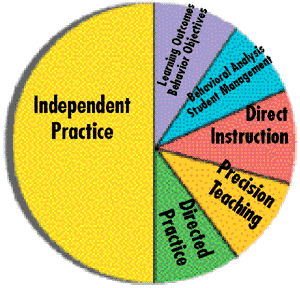 The Maloney Method
The Maloney Method
Maloney's method was derived from the educational research literature over a forty-year period, which of course included Project Follow-Through.
The Maloney Model has five components:
- Learning Outcomes/Behavior Objectives
- Student Management/Behavior Analysis
- Direct Instruction
- Precision Teaching
- Practice
These five components include the only two (out of 16 tested) from the Follow-Through project which demonstrated consistent academic gains for children at risk of school failure, plus three more Maloney added during his teaching career. As Maloney's book Teach Your Children Well explains,
Of the two methods which were successful, the Direct Instruction model from the University of Oregon accounted for the largest share . . . The second model, Behavior Analysis from the University of Kansas, accounted for much of the remainder. . . . They also ranked first and second in affective measures, that is to say, how the children felt about their involvement and their learning.
Each component is described briefly below.
Learning Outcomes / Behavioral Objectives
If you're used homeschool curriculum for any length of time, you've probably run across a set of lessons with "objectives" or "outcomes" listed at the beginning of the lesson, or even a "scope and sequence" of the entire curriculum. Objectives provide a road map for learning. Gathered together into an orderly sequence, they become a "scope and sequence." The "scope" of what will be taught - e.g., the content - is outlined, and the sequence in which skills will be learned is given, usually in a chart format.
Ideally, outcomes are written so that they can be easily observed and measured. An example of a Maloney objective: "The student reads aloud from his/her story at 200 words per minute with no more than 2 errors." It is relatively easy to listen to a child read for a minute, to count the errors and the words read correctly to see if they have achieved the objective.
Student Management / Behavior Analysis
No one can teach effectively in chaos. So here are Maloney's classroom rules:
- Work quickly and quietly
- Bring all of your materials
- Keep your hands and your feet to yourself
- Say only good things
- Raise your hand to address the group.
All these can apply just as well at home as at school, except that "raising the hand to address the group" bit.
In this portion of the Maloney model (which is similar to that proposed by National Academy for Child Development founder Robert Doman and other "positive-reinforcement" advocates), teachers pay attention to those who follow the rules and systematically ignore those who break them. The closest compliant student is singled out for attention, rather than directing attention to the rule breaker. This is not a sneaky way of tricking kids into compliance; rather, students are actively taught the rules, to the point that they can state any or all of them verbatim if asked. The goal is to catch the student doing something right rather than punishing them for doing something wrong.
In the safety of the home, the parent can and should deal with genuine moral infractions rather than just ignoring them, as well as praising good behavior, However, as Doman points out in his materials, often parents fall into the trap of continuous negativity, It is important to remind ourselves constantly to notice and praise good behavior rather than taking it for granted.
Instruction / Direct Instruction
Most of the results of the massive Follow-Through study were accounted for by one of the sixteen methods, the Direct Instruction method.
The idea behind Direct Instruction is to enable any teacher to teach basic skills in such a way that every single child in the class will learn them.
Direct Instruction employs "scripting." Everything the teacher is to say, and that the student should reply, is written out in an actual script. Among homeschool materials, you may have seen this in the Cornerstone Curriculum Press materials, among others.
"Correction procedures" that tell the the teacher what to say when faced with specific wrong responses are also included in the script. All errors are corrected immediately.
Direct Instruction employs a three-part sequence called "Model - Lead - Test." First, the teacher models the task. Then, the students performs the same task along with the teacher. Finally, when the teacher is sure the student can do the task correctly, he or she is allowed to practice it alone.
To organize learning as much as possible, Direct Instruction teaches children rules whenever possible, rather than asking them to memorize baskets of facts, For example, in his Teach Your Children to Read Well phonics series, Maloney and his co-authors teach students that there are two possible plural endings for nouns:"s" and "es". They then present a set of nouns and teach the following rule. "If a noun ends with ch,sh, s,x, or z, use 'es' to make it plural. If it does not, use 's.'". Next, they present them with examples (e.g. brush) and with non-examples (e.g. tree) and ask them to say the plural ending "s" or "es" based on the rule. There are 20 such spelling rules, all of which are taught in the series.
There's much more to Direct Instruction than this. If you want to know more, the quickest way is to read Maloney's book!
Measurement / Precision Teaching
In the Maloney Method, after the instruction is completed, the teacher measures performance to ensure that the learning occurred. If the student didn't learn, the teacher didn't teach.
Usually the method used to measure performance is to take a timed sample of the student's new learning and compare it to a known standard. The same measurement taken each day provides information about the rate at which the student is learning.
Humans speak at approximately 200 words per minute. Once they learn to talk, children speak at about the same rate as adults. If the child were a fluent reader, the child should be able to read words at or about the same rate that s/he speaks. So when Maloney measures oral reading, he expects the child to read at a conversational rate. The standard is achieved when the child can read grade level material at 200 words per minute with no more than 2 errors. Any behavior that can be seen and repeated can be counted and charted to show current performance, rate of learning and distance from the standard.
In Maloney's method, objectives are set and changed based on data from thousands of children doing the same or similar tasks. Thanks to this research, it is known what level of performance constitutes "fluency" in a given skill. Children and teachers then both know exactly what they are aiming for, the amount of improvement, and how far they have to go,
To be fluent in reading, a child or adult should be able to:
- See/say sounds in isolation 60-80 sounds/minute
- See/say single words in lists 80-100 words/minute
- Think/say alphabet in order 300-400 letters/minute
- See/say sound-out words 20-30 words/minute
- See/say words in sentences 200+ words/minute
To be fluent in math, you and your children should be able to:
- Hear/write numbers (random) 80-100 numbers/minute
- Think/write numbers in sequence 120-160 numbers/minute
- See/say numbers (random) 80-100 numbers/minute
- See/write math facts (answers to single-digit problems) 80-100 facts/minute
These are just a few of the many "pinpoint" objectives in the Maloney Method. As you can see, it takes only a minute to determine exactly how fluent your child is in any of these skills.
Directed Practice
Directed practice is where the teacher holds your hand while you attempt the task you have just been shown. This allows the teacher to determine whether or not you are ready to practice that skill independently. Regardless of the teaching method you are currently using, smart homeschoolers always take the time to do this! We spot and correct errors so that our students do not practice mistakes.
Independent Practice
Maloney says, "Directed and independent practice comprise 60 to 70 percent of teaching and learning. Independent practice is by far the largest and most time-consuming aspect of learning."
Students are allowed to practice independently when their errors have dropped to an acceptable level so that the skill is being perfected. In math, for example, they are making occasional "stupid" mistakes (such as mistaking an addition problem that follows three subtraction problems for another subtraction problem) rather than organic mistakes, such as giving wrong answers although they understand the problem. At this stage, the child is able to catch his own errors, or resolve a problem correctly himself once it is marked wrong and returned to him,
Putting It All Together
The Maloney Method was based on research and experience with "at risk" children. It is highly successful at teaching basic skills to this group.
The benefits I see it bringing to homeschoolers are:
- Great help for those with special-needs children
- Scientific help in measuring your child's progress from day to day, regardless of his or her ability
- Generating more thought on curriculum design
- Generating helpful discussion on the benefits of teacher-centered rather than child-centered educational methods.
Maloney waxes passionate on the decline he feels child-centered methods such as Discovery Learning have brought to the public schools. This could lead to a helpful balance, since up to this point the rhetorical advantage has all gone to the child-centered camp.
Education is more than facts and skills, as Maloney himself agrees. You can't use pinpoint objectives and precision measurement to determine how wise a student is becoming, or to interest students in a career. Worldview subjects, such as history, literature, and Bible, should be explored as well as studied. However, teaching the facts of subjects ranging from history, music, and literature to Bible study will be much more effective if we adopt at least some of Maloney's techniques.